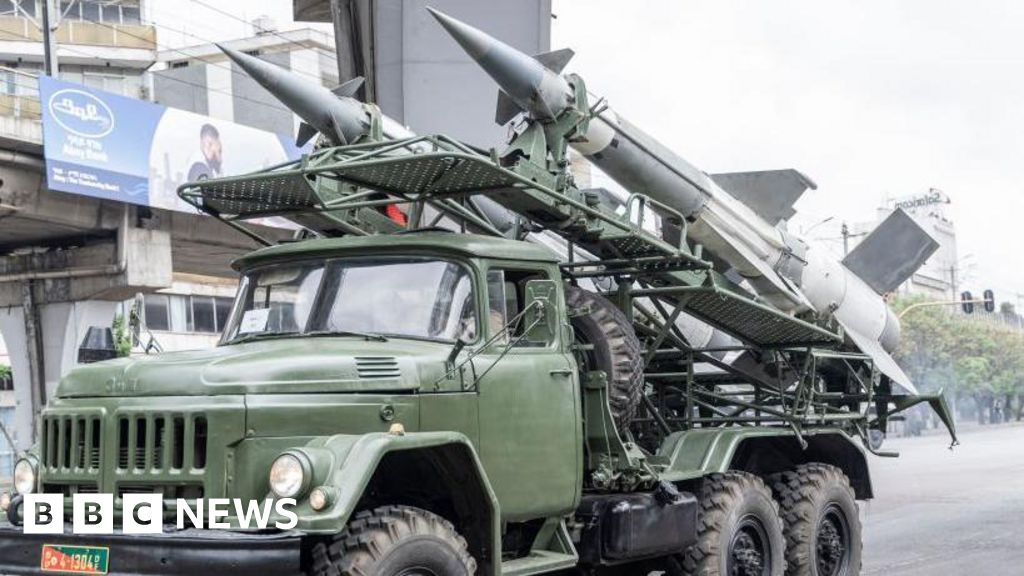Rising Tensions Between Ethiopia and Eritrea: A Looming Conflict Overshadowing the Red Sea
Background of Ethiopia-Eritrea Relations
Ethiopia has raised alarms, accusing neighboring Eritrea of preparing for potential military conflict in conjunction with an opposition faction. This development suggests a significant escalation in the enduring tensions between the two nations, particularly over control of the strategic Red Sea coastline.
Ethiopia’s Warning to the UN
Ethiopia’s Foreign Minister, Gedion Timothewos, communicated these serious concerns in a letter to UN Secretary-General Antonio Guterres. The letter indicated that the alleged collusion between Eritrea and a faction of the Tigray People’s Liberation Front (TPLF) has become increasingly apparent in recent months.
As Eritrea has not yet responded to these assertions, the relationship between the two countries has shown signs of deterioration since Ethiopia’s access to the Red Sea has been a focal point in their tensions.
Historical Context
Control over key territories has been a root cause of conflict between Ethiopia and Eritrea, highlighted by the border war from 1998 to 2000 over the town of Badme, which resulted in tens of thousands of fatalities. After a brief thawing of relations under Ethiopian Prime Minister Abiy Ahmed, due to a peace initiative with Eritrea’s President Isaias Afwerki, the situation has soured once again.
Proxy War Allegations
If the allegations made by Ethiopian officials are substantiated, it would suggest that Eritrea is orchestrating a proxy war against the Ethiopian government. This is aimed at thwarting any military attempts by Ethiopia to reclaim ports along the Red Sea coast, which Eritrea has controlled since its independence in 1993. As part of this purported collaboration, the TPLF has been accused of actively participating in armed conflict within Ethiopia’s Amhara region alongside local militias trying to topple Abiy’s administration.
Current Conflict and Implications
Reports indicate that the TPLF faction led by Debretsion Gebremichael controls significant areas in Tigray, while a different faction has allegedly joined forces with the Ethiopian government. This schism highlights the complexity of the internal situation within Ethiopia.
Simultaneously, Ethiopia has faced a crisis in the Amhara region, primarily due to a militant group known as Fano. These group, once allies of Abiy’s government, are now at odds with federal authorities, claiming to “protect” the interests of the Amhara ethnic group from perceived governmental atrocities.
Territorial Ambitions
In his letter, Gedion pointedly accused Eritrea and TPLF hardliners of backing the Fano’s military actions, particularly a recent offensive to capture the town of Woldiya in the Amhara region. Such maneuvers reflect a broader strategy to destabilize Ethiopia as Eritrea feels increasingly threatened by the latter’s renewed aspirations for access to the Red Sea.
Ethiopia, landlocked since Eritrea’s independence, has made concerted efforts to reclaim coastline access, arguing that relinquishing control over ports was a historical error.
Political Rhetoric
During a parliamentary session, Ethiopian President Taye Atske Selassie underscored the significance of the Red Sea and the River Nile as essential resources for Ethiopia’s survival. This assertive rhetoric drew sharp criticism from Eritrea’s Information Minister Yemane Gebremeskel, who lambasted the Ethiopian government’s focus on maritime and waterway disputes as “too crass and pathetic to sell.”
Conclusion
The situation remains volatile, with Ethiopia portraying a formidable stance against perceived threats from Eritrea and opposition groups. As we observe these developments, the potential for conflict looms large, with historical grievances and territorial aspirations continuing to shape this complex relationship between Ethiopia and Eritrea.
For ongoing updates on this developing situation, please refer to credible news sources to stay informed about the unfolding dynamics in the Horn of Africa.
